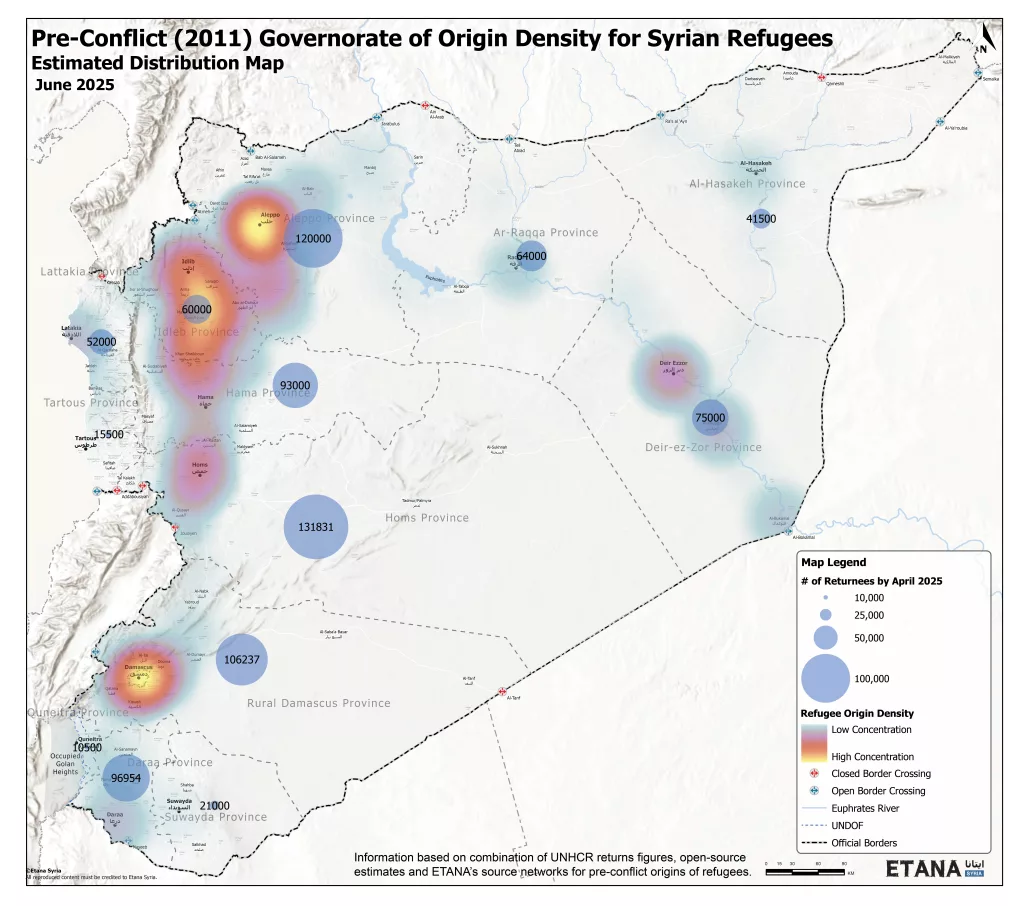Published in partnership with Konrad-Adenauer-Stiftung (KAS) Lebanon, this study assesses returns by refugees and internally displaced persons (IDPs) in the wake of the fall of the Assad regime as well as broader migration dynamics in and around Syria.
This study explores refugee and displacement dynamics following the fall of the Assad regime in December 2024. Drawing on surveys and interviews with returnees, refugees, IDPs, and residents inside and outside Syria, it finds that while over 1.7 million Syrians have returned—primarily internally displaced persons—many remain hesitant due to insecurity, weak institutions, and uncertainty about the interim authorities now in power.
Returns are largely self-organized and voluntary, driven by a mix of push factors abroad (economic hardship, xenophobia) and the pull of Assad’s departure. However, the regime’s fall alone is not enough: many refugees still see Syria as unsafe and are unconvinced by the current political process. The study also documents new waves of displacement following sectarian violence in coastal areas in March 2025, particularly among Alawi communities.
The findings highlight the need for a truly inclusive, accountable transition and sustained international support to create conditions for safe, voluntary, and dignified return. Without addressing structural insecurity, governance deficits, and housing restitution, large-scale durable return will remain elusive despite regime change.





